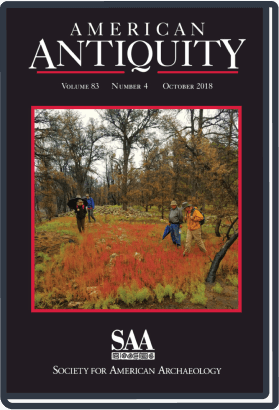BibGuru SAA Citation Generator
Cite websites, books, articles, ...

Lightning-fast and accurate citations with the BibGuru SAA citation generator
| 🚀 Fast | 👌 Simple and intuitive interface |
| 🎓 Cite in SAA & many other styles | 🥇 Most accurate citation data |
Getting citations and reference lists done correctly can be very confusing and time-consuming. That's why we developed BibGuru—to let you concentrate on your writing instead of stressing over how to format your references properly. We believe students shouldn't have to spend hours manually entering information or risk losing points due to citation errors.
BibGuru is a quick and easy-to-use SAA citation generator built with students in mind. Its efficient search tool lets you find books, websites, and journal articles and instantly add them to your bibliography. Start citing now:

I want to cite a ...
What is the SAA style?
The Society for American Archaeology (SAA) citation style is the preferred citation style for the three academic journals published by the SAA. These journals include American Antiquity, Latin American Antiquity, and Advance in Archaeological Practice.
How do I cite in the SAA citation style?
The Society for American Archaeology has published style guidelines for their journals, which can be found online. In general, the SAA citation style works with in-text citations and a References Cited page. These are the basic rules for in-text citations in the SAA style:
- Include the author's last name and year of publication, without a comma between the name and the date, e.g. (Thomas 2004)
- All direct quotations must have a page number from where the quotation was taken, e.g. (Wylie 1991:28)
- When citing a source with two authors, use the word "and" in-between names, e.g. (Gass and Varonis 1984)
- When citing three or more authors, list the first author's last name followed by "et al.", e.g. (Derwing et al. 2002) - but note that all author names must be listed in the References Cited page
How do I create a References Cited page in SAA?
Here are some basic rules for creating your bibliography in SAA:
- The reference section begins a new page, titled "References Cited", and must be double-spaced throughout
- All references cited in the text must appear in the reference section
- Arrange the references in this order: author(s), date, title (and subtitle), publisher, location of publisher
- Alphabetize the references cited by the last names of authors
- Italicize titles of books and journals
EXAMPLEBook with one author
Elster, Jon
1989 Nuts and Bolts for the Social Sciences. Cambridge University Press, New York.
EXAMPLEBook with multiple authors
Iannone, Gyles, and Samuel V. Connell (editors)
2003 Perspectives on Ancient Maya Rural Complexity. UCLA Institute of Archaeology Press, Monograph 49, Los Angeles.
EXAMPLEJournal article
Ashmore, Wendy
1991 Site-Planning Principles and Concepts of Directionality among the Ancient Maya.
Latin American Antiquity 2:199–226.
While all the specific rules of the SAA citation style might sound very complicated, you don't need to worry about getting them wrong with BibGuru. Use our SAA citation generator above to create the fastest and most accurate SAA citations possible.
FAQs
🦶 What is SAA format?
The Society for American Archaeology (SAA) format is the citation style for the three academic journals published by the SAA. These journals include American Antiquity, Latin American Antiquity, and Advance in Archaeological Practice.
😵 Is the SAA style difficult to use?
SAA is very easy to use with a little help of the BibGuru SAA citation generator! All you have to do is copy and paste your source into the BibGuru website, and we will generate a completely accurate citation for you.
✒️ What citation style does Archaeology use?
A citation style used in Archaeology is the SAA (Society for American Archaeology) style. You can read all about the SAA style in the Style Guide for American Antiquity, Latin American Antiquity, and Advances in Archaeological Practice.
✔ Where can I access the SAA Style Guide for free?
The Society for American Archaeology has released a fully revised and updated publication policy and style guide in English and Spanish online. You can download it here for free.
🔚 How do you cite the SAA style?
The SAA citation style uses in-text citations and a References Cited page at the end of your paper outlining your cited literature in detail. You can get familiar with the SAA citation style by reading their guidelines online, or you can focus on the content of your paper and let BibGuru take over the citations. Try it out here with just a click!